How to soak cereals correctly and why is it necessary?
Any housewife knows that before preparing pearl barley porridge or bean soup, legumes and grains should be soaked in water for several hours. This way they will boil better and cook faster. However, not everyone knows that fast cooking is just a small bonus. Soaking corn grits before cooking, as well as pearl barley, buckwheat, and rice, is necessary to free the minerals from phytic acid, which prevents the body from absorbing iron, potassium, magnesium and other vital substances.
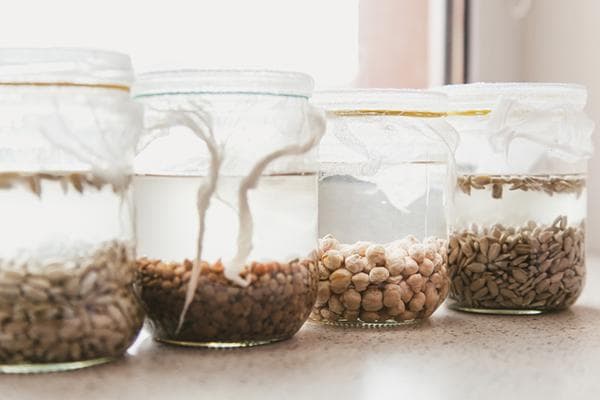
Why do you need to soak grains?
The vast majority of legumes and grains contain phosphorus. An antinutrient, phytic acid, is always attached to this microelement. This substance is not only not digested by the body itself, but also blocks the absorption of many useful elements that come from consuming other foods. By including buckwheat, barley, and rice porridge in your diet, cooked without prior preparation of the grain, you should not hope that the body will receive any tangible benefit.
In addition, phytic acid interferes with natural fermentation in the stomach, as a result of which fats and proteins obtained from fish and meat are also much less absorbed. A lack of microelements threatens the occurrence of a number of diseases (anemia, allergies, ailments related to the functioning of the digestive system and the musculoskeletal system), a decrease in the number of red cells in the blood and other troubles.
Many pets and birds eat whole grains and do not suffer at all, but rather gain weight. It's all about the peculiarities of the structure and functioning of the digestive tract of one type or another. For example, in a chicken, grain rests for several hours until it is ready in the crop, while in a cow, the processing of roughage begins in the first stomach, and enters the intestines only after the fourth.
A person is unable to eat live grain without undesirable consequences. To decompose phytic acid, it is necessary to “wake up” phytase, an enzyme found in cereals and legumes, which is activated when soaked or fermented. In addition, properly cooked cereals reduce the amount of lectins, gluten and complex proteins that interfere with normal digestion and absorption of food.
How to soak cereals before cooking?
The process of soaking cereals is very simple; it does not require special knowledge or experience.
First of all, you need to prepare the following:
- cereal – 0.5 kg;
- filtered water – 1l;
- natural oxidizer – 2 tbsp. l.
As an oxidizing agent, you can use table vinegar, lemon juice, yogurt or kefir.
How to soak cereal properly?
- Pour the cereal into a glass or metal container and fill with water.
- Add the required amount of oxidizing agent.
- Cover with plastic wrap or lid.
- Place in a warm place.
Each grain requires its own soaking time, but on average it will take 12 to 18 hours to neutralize phytic acid. After the allotted time has passed, the grain must be thoroughly washed - and you can start preparing your favorite porridge.All that is required is to choose a cereal for breakfast (for example, oatmeal), soak it according to the rules described above, and time will do the rest.
How long to soak grains?
Basically all grains are soaked. The exception is the well-known semolina, which is coarsely ground wheat, and “Poltava”.
The soaking time depends on the amount of antinutrients contained in a particular type of cereal. The table shows the minimum time required to neutralize phytic acid:
| Product name | Soaking time, hours |
|---|---|
| wild rice | 12 |
| white rice | 9 |
| oats | 8 |
| spelled | 8 |
| wheat | 8 |
| Arnovka | 8 |
| pearl barley | 6 |
| corn | 6 |
| buckwheat | 5 |
| barley | 5 |
| amaranth | 4 |
| quinoa | 3 |
For better digestibility of porridge, it must be seasoned with healthy fats: butter, coconut or olive oil.
What cereals can not be boiled, but only soaked?
Some grains can be eaten without cooking - just soak for the required time and start eating. Whether it’s tasty or not, everyone has their own opinion on this matter. Raw food lovers claim that this method of cooking retains more nutrients. Whole grain porridge helps cleanse the intestines and fill the body with energy.
The method of preparing porridge in a thermos has been known for a long time. This way you can cook barley, oatmeal, and wheat groats. The grains are thoroughly sorted and washed, after which they are poured into a thermos, salt and sugar are added to taste and boiled water is poured overnight. In the morning the porridge is ready.
Food in a thermos with boiling water is exposed to high temperature for a long time, but it reaches the desired condition very slowly, so all the beneficial properties of the cereal are preserved. This method can be compared to cooking in a Russian oven.
You don’t need to cook pearl barley and buckwheat, just add water for a certain time and then immediately start breakfast.
Here are two recipes for making porridge without heat treatment.
Buckwheat:
- Buckwheat is separated from debris and washed.
- Fill with drinking water in a ratio of 1:2.
- At room temperature, buckwheat is soaked for 5-6 hours.
After standing for the required time in a warm room, the grains will swell and the dish can be consumed without heat treatment. Just add salt and butter to taste and heat the porridge in the microwave.
Pearl barley:
- To prepare this dish, take 1 part cereal and 3 parts water. Pour water over the grain and let it brew for 24 hours.
- After 24 hours, the grains will swell and soften.
- Healthy porridge from soaked pearl barley is ready. All that remains is to add salt and sugar to taste and heat the dish in the microwave.
Not every grain is suitable for this preparation. For example, millet or rice porridge cannot be cooked without fire. After soaking, the grains remain hard and inedible.
Is it possible to soak grains overnight?
It is very convenient to soak cereals and legumes overnight. The table above shows the minimum values - if the processing time is increased by 2-3 hours, nothing bad will happen to the grain, it will only swell better and will certainly be freed from phytic acid.
The main thing is to make sure that the mixture does not ferment. In the summer, when the air temperature in the apartment is more than +25°C, it is better to put the container with soaked grain in the refrigerator or a cool room where the sun's rays do not reach.
Many types of cereals require soaking. This is necessary to neutralize phytic acid and reduce the amount of gluten and lectins found in whole grains that interfere with normal food digestion.
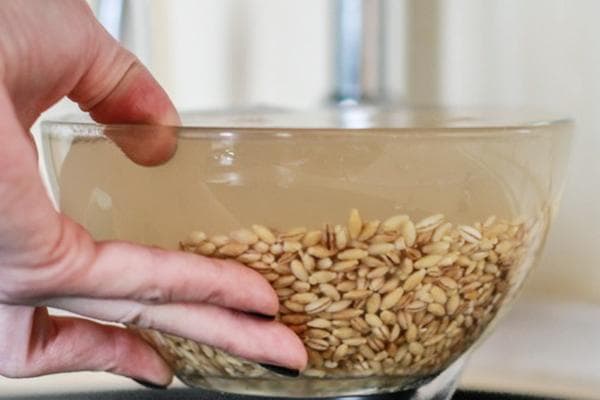
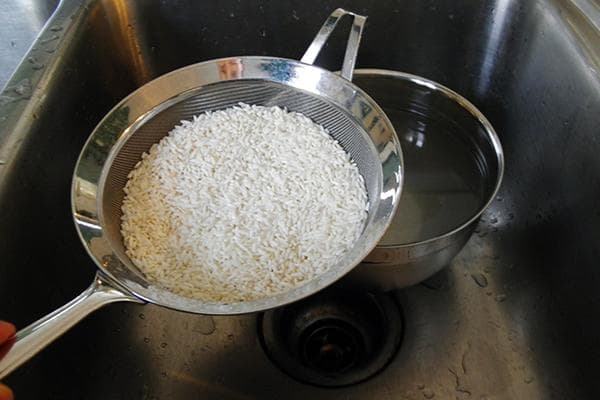
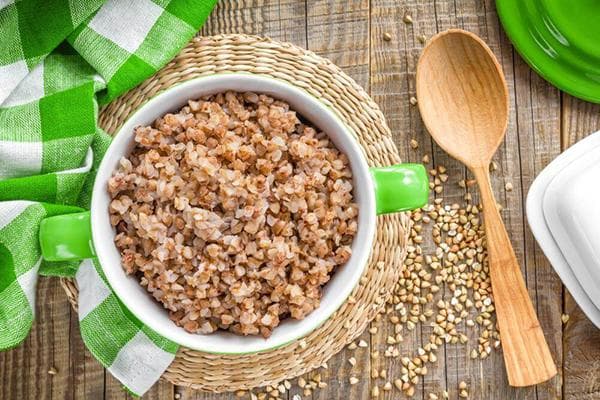
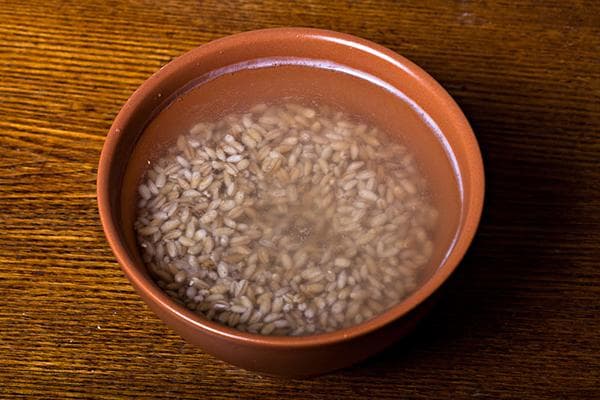
I think this should be done MANDATORY. I haven’t done it before - I didn’t know!!
Thank you
Hello!
Interesting story! Personally, I soaked millet and barley overnight in an enamel bowl, but porridges from such cereals, both in water and in milk without sugar and salt, turned out to be too boiled and not very tasty. I rinse the rice, buckwheat, and oatmeal to clean water and cook without soaking, cook until it starts to boil, then turn off the heat source and wrap the pan with a couple of towels. Thirty minutes later the porridge is ready, I eat it with sandwiches made from bread with butter and Russian cheese. I read about the dangers of phytic acid, but I don’t notice its effect on my body.
According to the chemist, this is some kind of nonsense in the style of Malysheva. 1) Why do you need to destroy phytic acid if, on the contrary, everyone has a problem with excess weight, and this acid helps reduce the absorption of fat and calcium 2). Neither lemon juice nor vinegar can be oxidizing agents, because carbon is already extremely oxidized to +4 3) some experiments were carried out on people, and for some reason the level of calcium in the body did not drop.
To the author - THANK YOU SO MUCH!
Competent and, most importantly, useful article!
I've been soaking grains for a long time. A small addition to the author’s article: if, in addition to soaking the peas and beans, you also cook them so that they are well boiled, they do not cause severe gas formation.
GOOD AND HEALTH to everyone!
Coconut oil is just as unhealthy as beef tallow and butter. American heart experts say this.
This oil contains saturated fat, which can raise levels of “bad” cholesterol (lipoprotein), according to the American Heart Association.
Coconut oil is generally marketed as a health food. Some believe the fat in it may be healthier for people than other saturated fats.
It seems to me that it is better to heat porridge in another way, but not in the microwave, as it will destroy everything useful...
I don’t know what to trust, who is now conducting research to make statements. In addition, when it comes to eating cereals without cooking, but only soaking, they write that they should be kept in water longer, i.e. the water has already been absorbed into the cereal, and there is no need to rinse it anymore, because it will spread, for example, buckwheat.
I have never soaked any grains before. Didn't know anything about phytic acid. Now I will definitely soak it.
You don’t need to soak all the buckwheat, just the green ones.
I soak all the grains, it’s good if they ferment slightly) that is, not for 3-6 hours, but much longer.